One WTC Prepares for Station Tenants
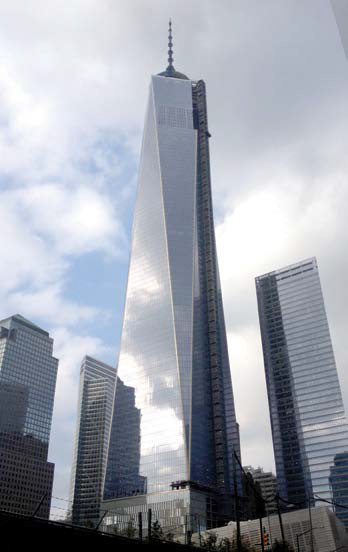
The Durst Organization hopes New York broadcasters will lease transmitter space at One World Trade Center. The building’s first office tenants are scheduled to take possession of their space this winter.
NEW YORK — This fall, TV Technology sister publication Radio World took a peek at the rooftop of the tallest building in the Western Hemisphere. Paul McLane, editor in chief of Radio World U.S. describes his tour of the massive new building which could potentially be the new home for those New York City-area TV and radio stations that were displaced after 9/11:
One World Trade Center, now soaring above lower Manhattan, is nearing completion. Condé Nast, its first office tenant, will take possession of its space this winter.
The Durst Organization co-owns the venture with the Port Authority of New York and New Jersey; Durst manages and leases the building. The company would like the rooftop to become a preferred transmission platform for radio and TV stations in New York, competing for RF tenants with the Empire State Building and complementing Durst’s own facility at 4 Times Square.
3.1 MILLION SQUARE FEET OF GLASS
The height of the new building—1,776 feet at the top of the spire—and its downtown location away from other very tall buildings are selling points to a potential broadcast tenant; indeed the location is consistent with FCC license locations for stations that had facilities at the original World Trade Center North Tower.
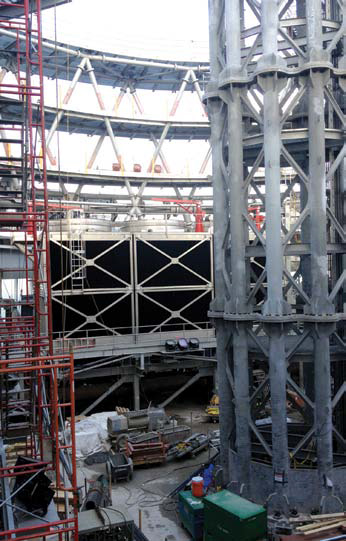
A view down onto the roof well. The base of the steel spire is at right. Master TV and FM antennas would be mounted on the spire; smaller systems like STLs, ENG, RPU and cameras will go on one of the three communication rings visible near the top center. Durst is wooing stations in the hopes of securing enough multi-year transmitter leases to justify installing TV and master FM antennas.
John Lyons, assistant vice president and director of broadcasting for the Durst Organization, took us up for a look at where the transmitters and antennas would go. Radio World Publisher John Casey accompanied us.
Get the TV Tech Newsletter
The professional video industry's #1 source for news, trends and product and tech information. Sign up below.
We started with a walk from lower Broadway past the 9/11 memorial, visible through a chain-link fence, and past construction detritus. Then we stood gazing up at 3.1 million square feet of glass and the unique architecture of David Childs.
We admired the 104-floor building’s vertical vanishing point, its triangular lines and unique “finned” lower windows that open for HVAC ventilation. The building has a number of post-9/11 safety features including an integral blast wall around its lowest levels, a fire-resistant concrete core and a vehicle screening center where incoming trucks will await security checks.
Then we burrowed in via an unfinished doorway and navigated our way through service hallways lit with bare bulbs and cluttered with pallets of sheet rock and other building materials. Even Lyons needed to consult the hand-scrawled directions on the walls because the layout changes during construction.
We rode an inside freight elevator up 102 stories and walked through an unfinished, three-story area that eventually will be the public observation deck. We paused to step onto the top of construction elevator scaffolding — outside of the building’s exterior walls—and took in the breathtaking scene through the fencing. The view is of course remarkable; looking down on New York has always inspired me. It is also an emotional experience, given the history of this site.
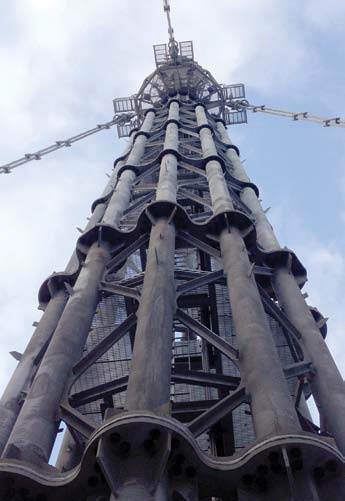
A view up the 408-foot steel spire, which brings the building height to its iconic 1,776 feet.
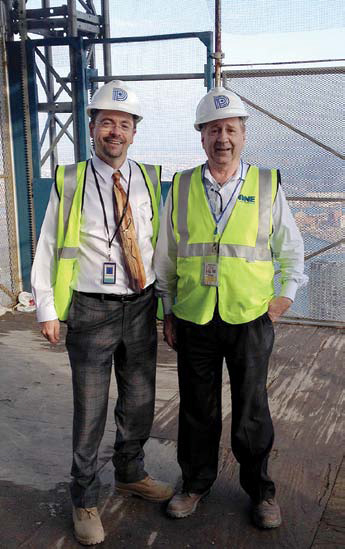
The author (L) with Durst’s John Lyons atop the temporary construction elevator scaffolding that is attached to the building’s exterior, approximately 1,300 feet up. Onward, up to the roof. Here one does not see directly out over the city at first, because you emerge into something of a well. Your attention is drawn instead to the huge steel spire rising immediately in front of you.
The mast, installed last spring, weighs 785 tons and consists of 18 sections of steel supported by four special sets of Phillystran guy assemblies. It seems remarkably large and solid this close up.
Lyons said the building can support RF for all of the 30 or so FM and TV stations in the market. He envisions three master antennas mounted on the spire: FM, VHF and UHF. The roof is fringed by three communication rings that can support smaller antennas for microwave, ENG/RPU and satellite, as well as cameras.
89 BROADCAST LEVEL
Transmitters would be installed below, on a kind of mezzanine between the 89th and 90th floors called “89 Broadcast Level,” which would provide 17,000 to 20,000 square feet of space.
Some years back I was also privileged to visit the broadcast facility at the Empire State Building. Empire currently is home to most of New York City’s FM transmitters— 19, according to a 2012 IPO document—and serves as home to nearly all of its digital television transmitters. Durst’s 4 Times Square facility supports 14 FM transmitters, most of which are backups, and five TV.
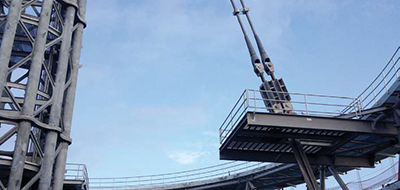
A closeup of one of the four spire guy sets. Phillystran supplied eight aramid fiber high-performance tower guy assemblies, each approximately100 feet long and 6 inches in diameter, to support the mast. These custom assemblies are the largest Phillystran tower guys ever assembled and have a rated break strength over 1.7 million pounds.
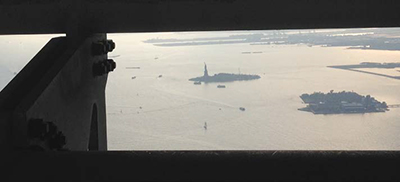
The Durst Organization hopes to bring broadcasters back to Lower Manhattan. The site looks down onto the Statue of Liberty and Ellis Island. One WTC brings new competition for that lease business, and it involves no small amount of money. Lyons did not discuss financial specifics; but the broadcast center would generate approximately $10 million a year in revenue, according to a 2012 Port Authority press release, and cost more than $7 million in upfront capital. Those costs would be borne by The Durst Organization.
He and other company officials have been making their pitch to local broadcasters, describing the broadcast center’s features: 2 Megawatts of backup power; condensed and chilled water for equipment cooling and heat exchange; loading docks with hydraulic lift gates; 24/7 building engineers on duty; and fiber and copper communication lines at the top of the building.
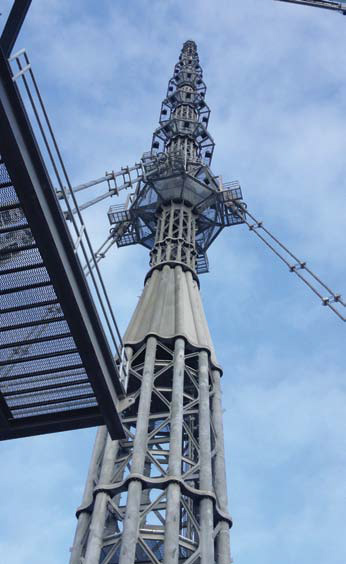
The 785-ton spire stands ready for broadcast antennas. At present, no agreements have been announced. Lyons said the TV spectrum “repack” has injected some uncertainty, giving stations pause before they invest in RF facility changes. I also thought aloud that perhaps stations have less motivation to invest in new over-the-air facilities these days, given that so much media consumption is done via non-broadcast channels; Lyons said time will reveal that.
But we agreed that over-the-air remains a multibillion-dollar business; that New York remains a lucrative market for broadcasters; and that the reported “cord cutting” phenomenon means more people these days may actually be watching OTA television. He sounded optimistic that Durst can attract enough stations to 89 Broadcast Level to proceed.
After climbing another level and peering down on New York Harbor, we rode down. On the way out, we peeked at the 55-foothigh lobby; and we saw an underground gallery that connects to the nearby World Trade Center Transportation Hub, designed by Santiago Calatrava and featuring its own distinctive spiny architecture. I marveled at the scope of these projects, the incredible detail and necessary coordination of planning.
Radio World is not in the business of making RF site endorsements—only a broadcaster knows where to best put its transmitter—but certainly One World Trade Center will give potential tenants something to ponder. And the structure itself is an impressive, important one—not only for lower New York but for the country.
You can view many videos and photos of the building, including views from various floor levels, at onewtc.com.
